Car won’t start in cold
Why your car won’t start in cold weather
If your car started right up in Summer and Fall temperatures but now your car won’t start in cold weather, look at these most common causes.
A dead car battery or discharged car battery is the #1 reason why your car won’t start in cold weather
Think your battery is ok just because your dash lights come on? That doesn’t mean squat. It takes less than 5-amps of power and as little as 10-volts to light up your dash lights. But it takes 100-200 amps and at least 12.2 volts to crank your engine. It doesn’t matter if you’re replaced your battery recently; if you haven’t tested your battery with a voltmeter, you really don’t know its condition. Anything less than 12.2-volts is a DISCHARGED battery. A discharged battery can’t spin your engine fast enough in cold weather for it to fire up and run.
If your battery is dead, use a jumper pack or jumper cables to help crank the engine. Leave the jumper pack or jumper cables connected to the battery for at least five minutes before attempting to start. You’ve got to give it a chance to recharge the battery. Otherwise, the dead battery will suck all the power from the jumper pack or jumper cables. In other words, the dead battery will draw power first, before the jumping power can crank the starter.
Once you get the engine started, do a complete battery terminal cleaning. Then have the battery and charging system tested.
Worn sparks plugs are the 2nd most common reason why your car won’t start in cold weater
Worn spark plugs can work just fine in the Fall and even early winter but let you down on the first deep freeze. Why? Because it’s much harder to ignite cold air and cold fuel. If your plugs are worn, they won’t produce a hot enough spark to ignite the cold air/fuel mixture. And if you try and fail to start your engine, chances are you engine will be flooded with gas. Your car’s ignition system has to be in tip-top shape to start when it’s below zero outside.
Some people test their ignition system by removing a spark plug and test it for spark by grounding it against the engine. That test confirms whether the ignition system is working, but it does NOT confirm that the spark plugs are in good shape. A worn spark plug can fire in open air but fail to spark in the combustion chamber
The wrong oil viscosity or worn out oil can reduce cranking speed below the minimum needed to fire your engine.
Oil thickens when cold. If your carmaker lists a summer weight oil and a different oil for cold temperatures and you haven’t changed to the cold water recommendation, that can cause a no start when cold condition.
Sensor or throttle body issues can prevent your car from starting in cold weather
The computer uses data from the engine coolant temperature sensor, the intake air temperature sensor, air density data from the MAF sensor or barometric pressure data from the MAP sensor to calculate the correct amount of fuel to add to the incoming cold air. Bad data from any of those sensors will result in a mixture that’s too rich or too lean and it won’t start your engine.
A carboned throttle body can also produce a no-start when cold, even though it’ll start in warmer weather.
You need a digital multimeter or a decent scan tool with live data to diagnose sensor or throttle body issues.
Tips to start your car in cold weather
Clear a flooded engine
If you’ve tried starting and it wouldn’t fire up, chances are it’s now flooded with raw gas. To clear the flood, press the accelerator pedal to the floor and hold it there while you crank the engine. That puts the computer into “clear flood” mode which shuts off the fuel injectors. The combination of a wide-open throttle plate and shut down fuel injectors give the engine a chance to dry out the cylinders and spark plugs. After cranking with your foot down for a while, release the pedal and try again.
Try using starter fluid to start your engine in cold weather
Starter fluid is more flammable than cold gas and if the air/fuel mixture was too lean or you have worn spark plugs, starter fluid may give you just enough ignition to get the engine running. Just don’t overdo it. If a quick shot of stater fluid doesn’t produce any noticeable effect, stop using. it.
How to test for spark
Most people test for spark by removing one of the spark plug wires from a plug and holding it about a half-inch away from the top of the plug while someone cranks the engine. But a spark in open air doesn’t mean the ignition coil is strong enough to produce the correct spark when the air/fuel mixture is compressed. To check for proper spark you really need an in-line spark tester like the ones shown below.
Lisle 20610 inline spark plug tester
Install the Lisle 20610 inline spark tester between the spark plug wire and the spark plug. Then crank the engine and watch the spark jump across the gap in the window area
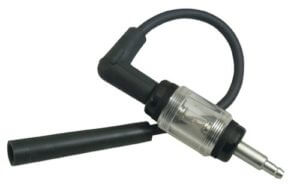
Inline spark plug tester
Lisle 19380 Spark Tester
Slide the grooved portion of the tester over a spark plug wire
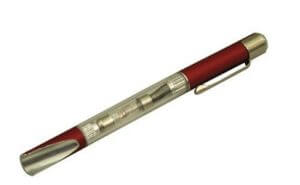
Spark tester for spark plug wires
and crank the engine. The Lisle 19380 Spark Tester includes an inductive pickup that lights a neon tube inside the tester every time it detects high voltage discharge.
Test coil-on-plug ignition system
If your car has a coil on plug ignition, you’ll need a special tester to see if the coil is firing. Waekon-76562 Quick Variable Sensitivity ignition coil tester is designed to give a visual indication every time a coil on plug coil fires. Just hold the sensor end on the coil and watch for the visual indication.
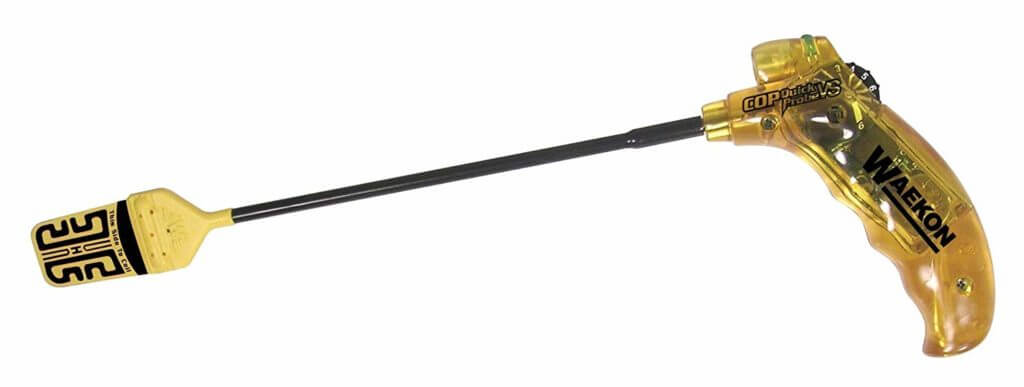
Waekon 76562 coil on plug tester
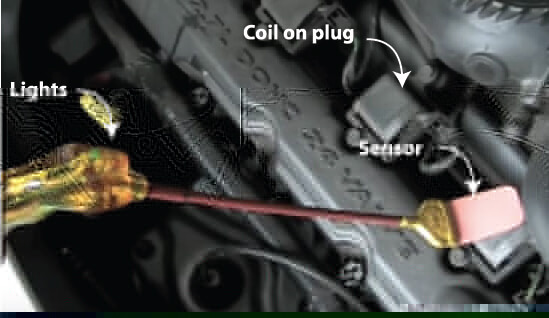
Waekon coil on plug tester in use on engine’s fuel injectors
You’ll also need a special tool to check for fuel injector firing. The Waekon 76462 Universal Electronic fuel injector tester works just like a coil tester. Simply place the probe on the injector and it lights up when the injector fires.
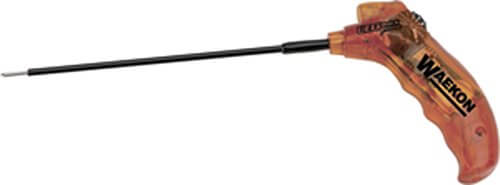
Fuel injector tester
If the coil and fuel injectors fire
If the ignition coil and fuel injector fire, you should get combustion and engine fire up.
But there are other issues that can cause a car won’t start in cold weather. Let’s talk about those.
Is the engine cranking at the right speed?
Motor oil thickens when cold, causing more friction and reducing engine cranking speed. But cold weather also reduces the chemical reaction inside the battery, lowering its voltage and amperage output. In addition, corrosion on the battery posts and terminals can dramatically lower the power available to the starter.
If your engine isn’t cranking at the proper speed, it won’t start even if it has spark and fuel. An internal combustion engine requires at least 100 RPM to start. If your engine is cranking slowly, check the battery charge level using a digital multimeter.
©, 2018 Rick Muscoplat
Posted on by Rick Muscoplat
